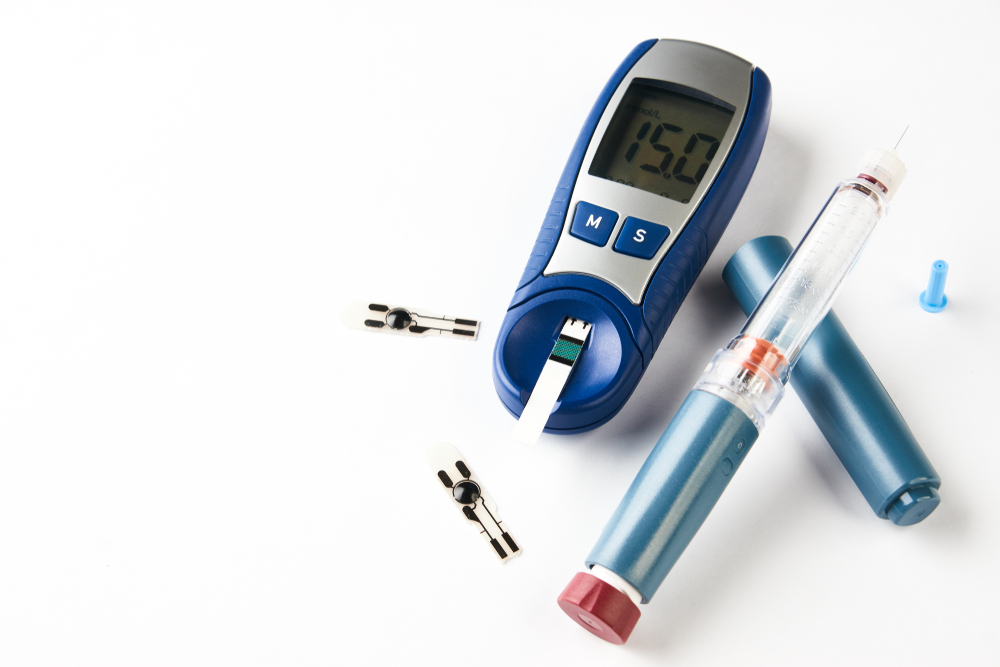Diabetes is a metabolic disease characterized by elevated blood glucose levels due to defects in insulin production or inability to use insulin. According to the Census for Disease Control and Prevention 9.4% of the U.S population have diabetes, with 23.8% of those undiagnosed. Individuals that are diagnosed with diabetes typically live normal lives through careful management of:
- medications,
- dietary changes,
- and exercise.
While medication and dietary changes play crucial roles, the addition of integrating regular exercise into your routine can significantly improve your condition and overall well-being.
Individuals who are diagnosed with diabetes are more likely to have a higher prevalence of cardiovascular disease risk factors compared to those who are not. Regular physical activity offers numerous benefits for individuals living with diabetes. Exercise helps to lower blood sugar levels by increasing insulin sensitivity, allowing cells to better utilize glucose for energy. Additionally, engaging in physical activity promotes weight loss and maintenance, reducing the risk of obesity and related complications such as heart disease and stroke. Exercise also improves cardiovascular health, lowers blood pressure, and enhances mood, leading to a better overall quality of life.
Types of Diabetes
Four types of diabetes are recognized based on etiologic region, Type 1, Type 2, gestational and other specific regions (i.e. drug induced, genetic defects). Type 1 and Type 2 are the two distinct forms of diabetes. They are the most common types of diabetes with 90-95% of all cases being type 2, and 5-10% of cases being type 1. Gestational is diagnosed during pregnancy when there are elevated blood sugar levels. Differentiating between the the types is essential for proper diagnosis, management, and understanding of the condition.
Type 1
Also known as “juvenile diabetes” as it is mostly commonly diagnosed in young children. However, it can be diagnosed at any age. This occurs when the body’s immune system mistakingly attacks and destroys the insulin-producing beta cells in the pancreas. The body destroys the beta cells, which leads to a deficiency in insulin. Insulin is a very important hormone to regulate blood sugar levels and also store glucose for energy. Lifelong management including insulin therapy is required.
Type 2
Also known as “adult-onset diabetes” as it is mostly diagnosed in people over the age of 40. This occurs when the body becomes resistant to insulin that the body naturally produces. This process takes place gradually over time as it is associated with lifestyle factors such as obesity, diet, and physical inactivity. Due to the rising rate of obesity and sedentary inactivity, type 2 diabetes is becoming more common to be diagnosed in children.
Gestational
Gestational diabetes is diagnosed for the first time while one is pregnant. While this may be scary as it causes a rise in blood sugar levels. The good news is that one’s blood sugar levels normally return to normal values after pregnancy. With that in mind in 50% of women with gestational diabetes develop type 2 diabetes in the future. As well have a higher chance for the baby to be a diabetic. It is recommended to get your blood sugar tested regularly after delivering of your baby to ensure levels are normal.
Managing Diabetes
Physical activity is a very important key for managing diabetes. Including diabetes related complications, insulin resistance and helping to prevent type 2 diabetes. As type 2 diabetes is mostly due to lifestyle factors, exercise is the best medicine.
Benefits
Exercise helps to lower blood sugar levels by increasing insulin sensitivity. This allows cells to use glucose more effectively for energy. And of course engaging in physical activity promotes weight loss and maintenance, reducing the risk of obesity and helping to prevent the onset of type 2 diabetes. Exercise also improves cardiovascular health, lowers blood pressure, decreases CVD risk factor, and enhances mood, leading to a better overall quality of life.
Exercise Prescription
This exercise prescription is for healthy adults that generally applies to adults that are diabetic with no other underlaying complications. In those with other complications exercise should be modified as appropriate to those conditions. Maximizing the cardiovascular and metabolic benefits resulting from exercise is a key outcome for both types of diabetics. Healthy weight loss and maintenance of appropriate body weight are often issues for those with diabetes. It is strongly encouraged that those with Type 2 and Type 1 diabetes to participate in a combination of both aerobic and resistance training. It has been proven that this method is superior compared to only training one of modes.
Aerobic
Aerobic exercise than can be completed by going for a walk, run, bike, swim or any prolonged rhythmic activities. This mode of exercise should be completed 3-7 day/week for a minimum of 150 minutes per week. Due to individuals with Type 2 diabetes initially having low fitness levels. It is recommended at least 150 min/week of aerobic exercise to achieve optimal CVD risk reduction and increase cardiorespiratory fitness.
Strength
Frequency of strengthening exercises should be completed 3 days a week. This can be completed in a gym setting, or in your living room completing exercises using resistance machines, body weight, bands, free weights and more. The exercises should be completed with 8-10 reps for 3 sets per exercise, with an intensity of 5-8 on a 1-10 scale.
if you have any questions about exercises to maximize your muscle potential feel free to book a consultation with one of our treatment team kinesiologists. They have extensive training in this area and can work with you to develop an exercise program specific for your needs.

